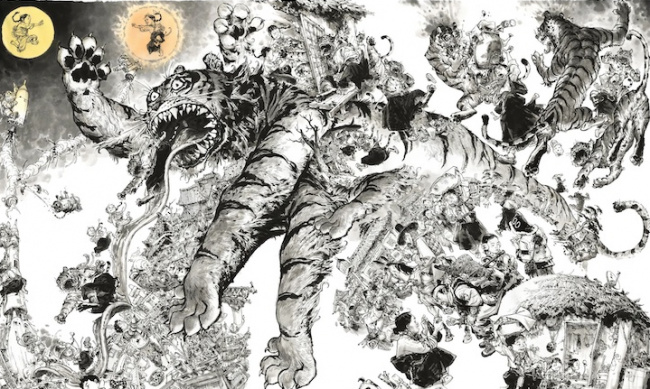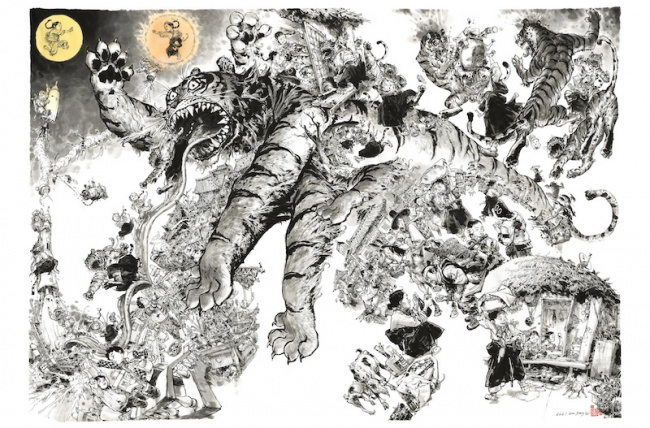Kim was born in 1975 in Goyang-Si, South Korea, and attended Dong-Eui University in Busan. When he was about six years old, he began drawing, and as part of the process, he also developed what he called his “memory library”: He memorized the visual details of everything from sneakers to giraffes and could draw them freehand.
“Sneakers, a bicycle, a motorcycle… It began with an obsession for things I wanted to have but couldn't,” he told the Korea Times in a 2021 interview. “For the type of running shoes I wanted, I would collect their photos in magazines, closely observe my friend's pairs and touch them to learn their shapes from different angles. I would then turn them into drawings that I could own.”
After his mandatory two years of army service (during which he added a variety of vehicles and weapons to his memory bank), Kim began drawing manhwa; his first published comic was in Young Jump magazine, and collaborated with writer Seung-Jin Park on the six-volume series Tiger the Long Tail. He also illustrated two novels by French author Bernard Werber and was the artist for Jean-David Morvan’s graphic novels SpyGames and McCurry, NYC, 9/11. In North America Kim was known mainly for his comics covers, most recently a series of six covers for Robert Kirkman and Chris Samnee’s Fire Power. He was also a contributor to the anthology Batman: The World (see “Brian Azzarello and Lee Bermejo Kick Off ‘Batman: The World’”). Over 12 years, he also completed and published a number of art books, one of which was a collaboration with Japanese artist Katsuya Terada; Kim’s most recent book is Sketch Collection 2022, published by Superani.
In 2011, at a comic con in Bucheon, Korea, Kim put white paper over the three sides of his booth and covered them with drawings. A video of the event went viral, and Kim developed a new aspect of his career doing live drawings on videos and on tours around the world, as well as instructional videos. He is also credited in the Guinness Book of World Records with creating the world’s largest drawing in the Fisheye Art category.









